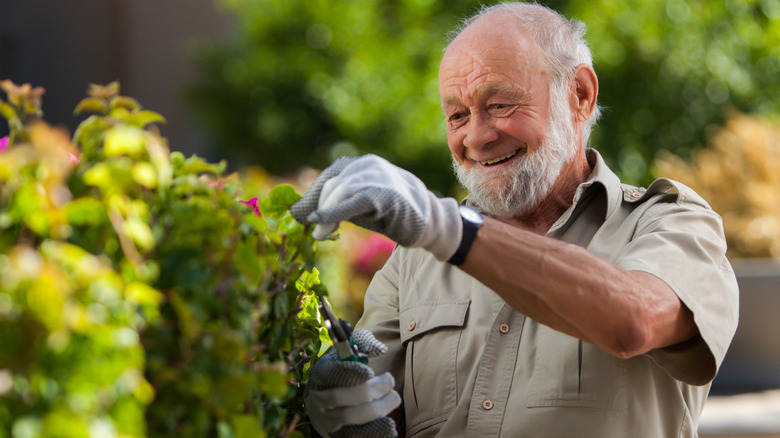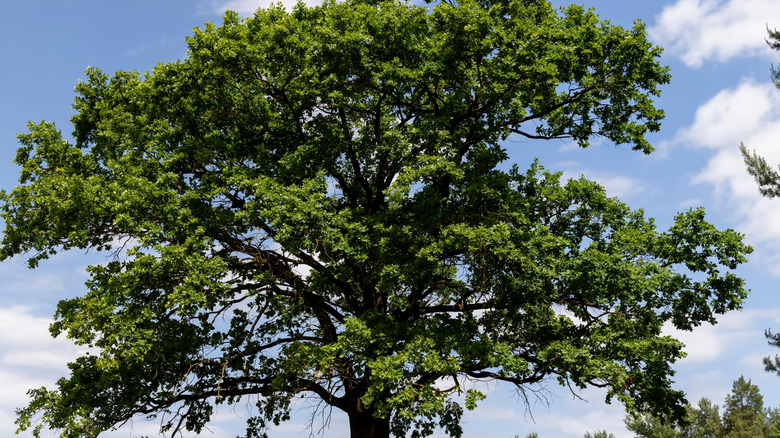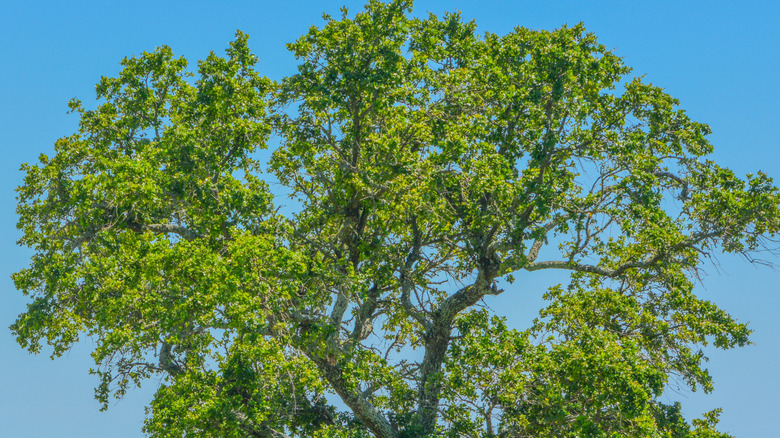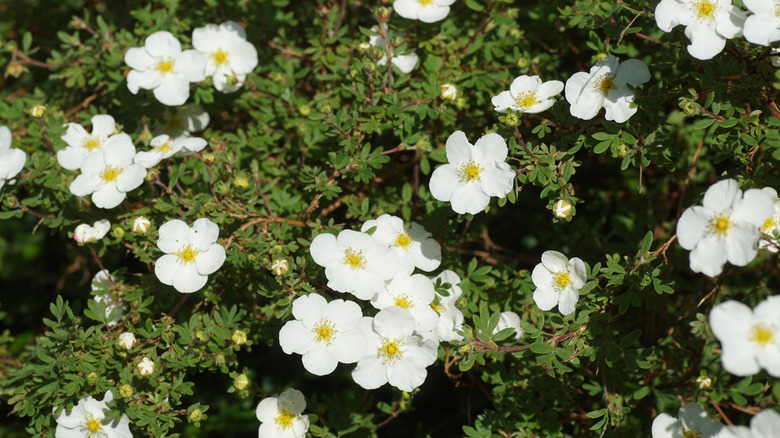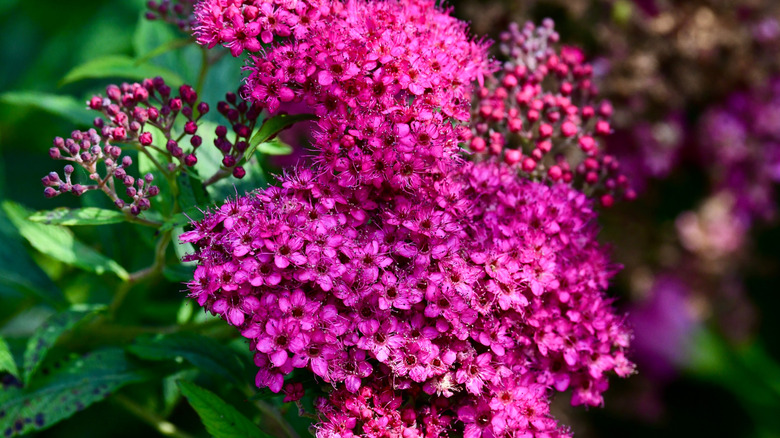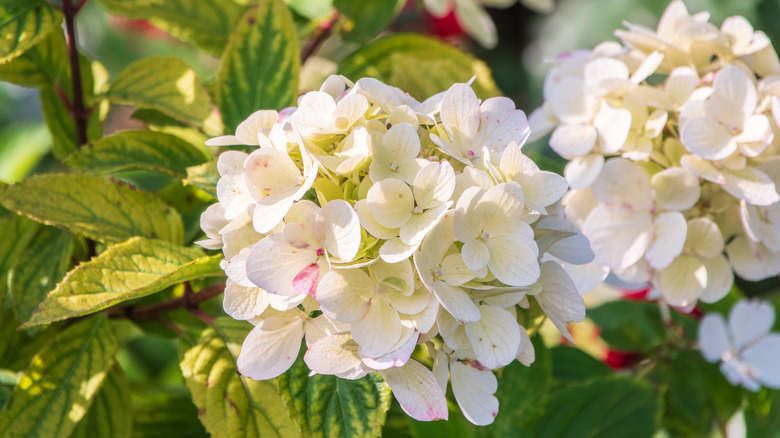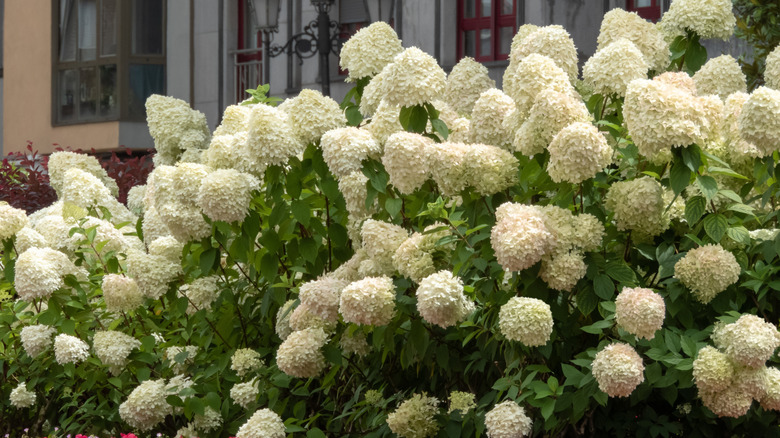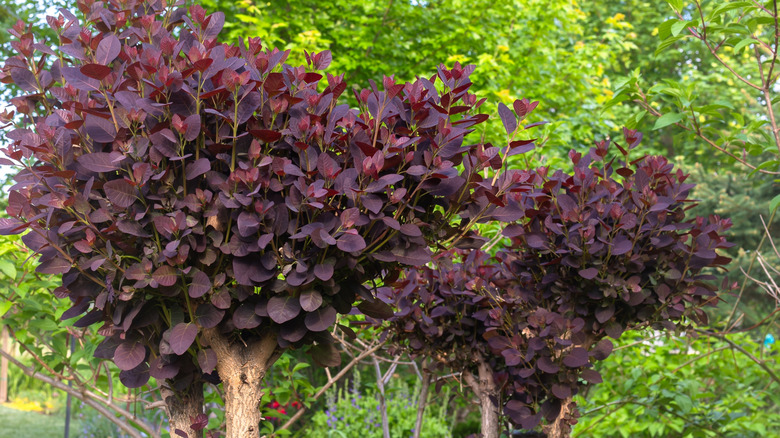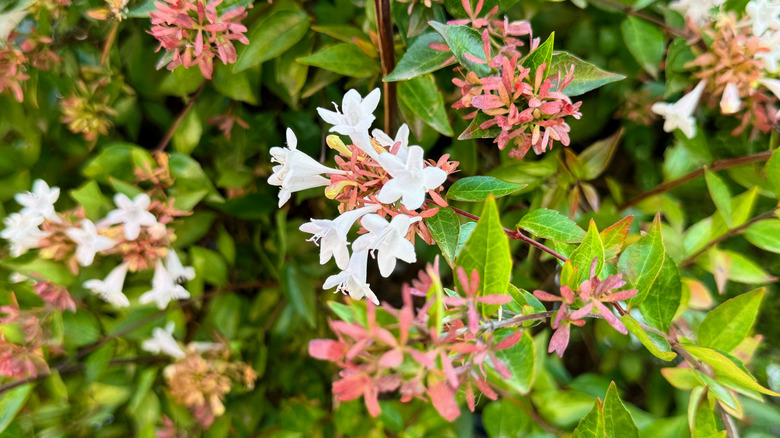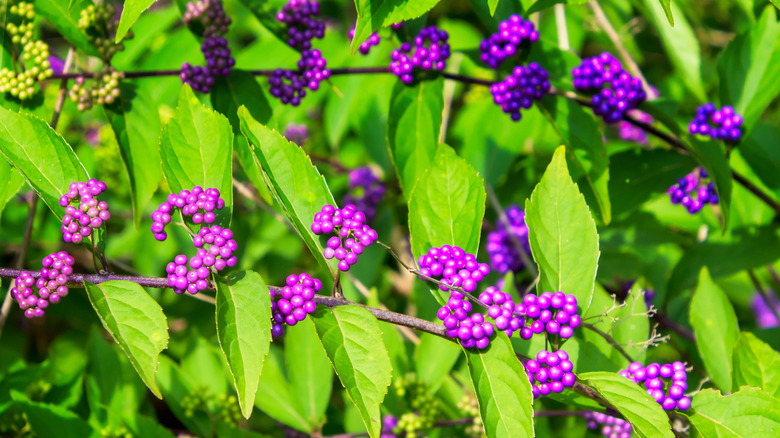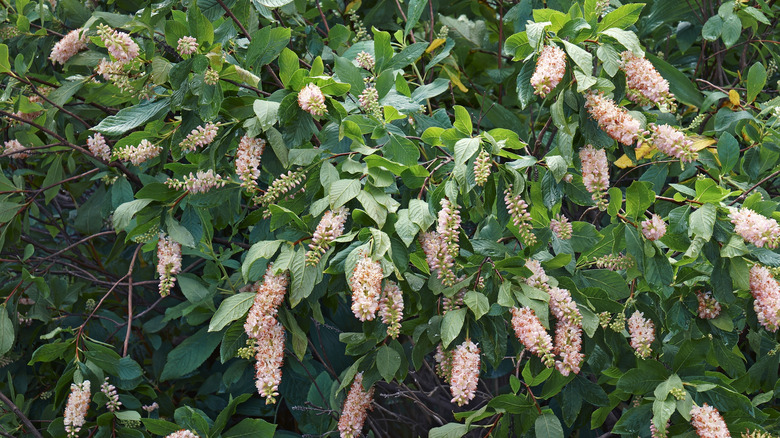10 Plants You Shouldn't Be Pruning In The Summer
When you garden, you must follow nature's clock. While the warmth of summer may inspire the wielding of pruning shears, not all plants will appreciate the act and effort, no matter how delayed their maintenance is. The reasons for this vary across plant specimens. Some, such as oaks, experience increased susceptibility to disease pathogens. In contrast, summer-flowering shrubs, including hydrangea and spiraea, risk losing their flowering potential for the season. Others may compromise their fruiting potential, frustrating local pollinators. Finally, some plants may delay their dormancy, flushing out new growth that may experience winter damage.
Given the array of reasons, it's beneficial to research the different plants growing in your garden and their specific growth requirements. When that feels like too daunting a task, check your plants for new buds. If they appear on the new stems, it's advisable to leave them undisturbed during the summer and wait for them to enter dormancy before shaving off any undesired growth. In any case, should you feel the necessity to prune the plants over disease or pests, ensure you don't trim them too severely. Otherwise, it might impair their recuperation, owing to them already feeling stressed from the summer heat and drought. Now that we've established the main pointers, here's the quick roundup of some popular plants you may find in your garden but shouldn't prune in the summer.
Oaks
Understandably, you would want to prune oak (Quercus spp.) trees occasionally to keep them a manageable size without depriving the birds of food and habitat. However, avoid doing so in the summer. With sap-feeding beetles still active around this time, they may deposit fungal spores of Ceratocystis fagacearum in the pruned cuts, infecting your trees with oak wilt disease. Because oak wilt disease leads to leaf necrosis, it can prove lethal for oaks, especially red oaks. For this reason, the best time of year to prune your oak trees is in winter (from December to February) when disease-vectoring beetles aren't active.
American elm
American elm (Ulmus americana) is another plant you should avoid pruning in the summer. That's because the pruned portions may contract Dutch elm disease during the growth season if any infected elm trees already exist in their vicinity. To be clear, this recommendation mostly applies to the Pacific Northwest, where sickly old trees still stand and disease-vectoring elm bark beetles are present in a heavy concentration. However, if your tree is already infected, you may prune the ailing stems immediately to stem any further spread. For healthy and disease-resistant varieties, stick to pruning when the trees have defoliated.
Potentilla
Every couple of years, potentilla shrubs require a haircut to encourage new shoot growth and abundant flowering. However, summer isn't the right time to go for it. Potentillas produce buds in the same year as their flowers, meaning they bloom on new wood. Trimming them in the summer could eliminate the burgeoning buds, leading to a complete display washout. Instead, prune these plants in spring to keep them happy and healthy before budbreak, or in late winter. Note that Potentilla indica and Potentilla recta are invasive in some U.S. states and are best removed rather than pruned in those areas.
Japanese spirea
Generally, Japanese spireas (Spiraea japonica) can do without pruning. However, as they grow straggly with age, many gardeners undertake rejuvenation pruning to restore their appearance and vigor. But, like potentillas, spireas produce buds on new wood, which you may lose if you cut back the plants in the summer. Leave rejuvenation for dormant winters or early spring, and don't forget to use these tricks for pruning your spirea bushes to keep them looking neat. Note that it's invasive in several U.S. states and is best removed to avoid harming the local biodiversity any further.
Smooth hydrangea
Smooth hydrangea (Hydrangea arborescens), including its popular cultivar 'Annabelle,' is the hydrangea variety that loves a massive pruning, albeit not in summer. That's because, like many other summer-flowering shrubs on this list, it buds out just prior to blooming, and pruning the stems could forfeit flowers. So, when you're concerned that smooth hydrangeas have overgrown and risk growing floppy in the growth season, cut back their foliage to the ground in early spring when they're still dormant. Also, remove any suckers that may later overcrowd the beds.
Panicle hydrangea
Panicle hydrangeas (Hydrangea paniculata), including 'Limelight' and peegee hydrangea, shouldn't be pruned in summer. Otherwise, you could end up eliminating the buds of the current season that began forming shortly after the shrub greened up during spring. As you can imagine, the flower display will be nothing to write home about. Instead, clip off the deceased or decayed branches in late winter when the shrub is dormant and yet to bud out. Alternatively, you may prune panicle hydrangeas in the fall after it has dropped all leaves, but you'll lose out on the winter interest provided by the drying flowerheads.
Smokebush
If your smokebush (Cotinus spp.) blooms after June, you should reconsider pruning it during summer, or it will be bereaved of its buds. That's because the flower buds appear on the new stem growth that has been developing since spring. Pruning after it has terminated flowers in late summer isn't recommended either, lest it encourages fresh growth that may ultimately suffer winter damage in cold regions. Instead, wait until the winter transitions into spring and snip off the undesired stems when the shrub is still bare. Early spring is usually the best time to train smokebush into the desired form or habit.
Glossy abelia
Like spiraeas, glossy abelia (Abelia x grandiflora) can usually do without pruning. The exceptions? When you seek to control its size and spread or prevent variegated cultivars from reverting to their original color by cutting back the faulty stems. As glossy abelia starts producing buds while greening up for spring, cutting it back in summer would negatively affect the flower display. Considering many gardeners plant abelias to serve butterflies, such ill-timed pruning can also disappoint our pollinators. Under such circumstances, it's best to wait out the duration the plant takes to grow dormant and prune it by winter's end.
American beautyberry
If your American beautyberry (Callicarpa americana) bush is overgrown and in a solid need of a haircut, summer isn't the ideal time to do that. While you might not care much for the inconspicuous flowers, they're important to wildlife because these flowers will eventually set red berries. In addition, the beautyberry will lose its beauty in the growth season and may become vulnerable to winter die-back if pruned severely. Given these reasons, you're better off pruning American beautyberry in the winter or early spring when it lacks dormant flower buds. This will promote new sprouts, producing a prettier plant.
Summersweet clethra
Avoid pruning summersweet clethra (Clethra alnifolia) in the warm season. As is typical for most summer bloomers, it sets buds in the same year it flowers, usually right after it sprouts new leafy stems in the spring. Ill-timed cuts could eliminate the new buds and the display, attracting fewer butterflies and bees. Late summer pruning could be equally harmful, as the flowers eventually make way for seeds that many birds depend on for fall food. So, wait until winter or early spring to rejuvenate your shrub. This way, you can still enjoy wildlife benefits and tidy up the plant.
